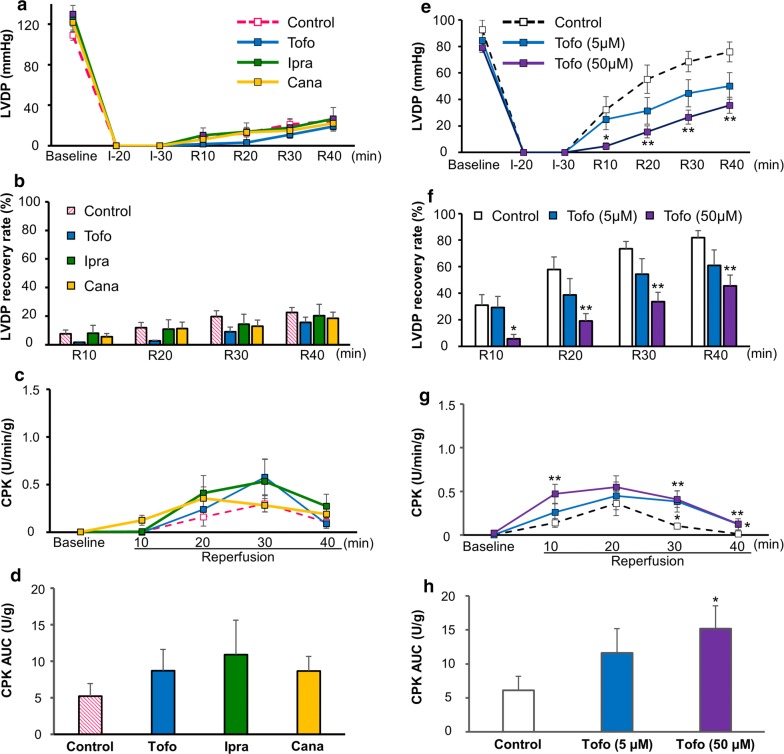Fig. 4.
Cardiac functional recovery and myocardial injury after ischemia–reperfusion injury with or without SGLT2-inhibitor perfusion. LVDP profiles and myocardial injury in HFD (a–d) and NFD (e–h) mice are shown. LVDP profiles (a) and LVDP recovery (percent of baseline) (b) measured at the indicated time points during ischemia–reperfusion in the control (open pink square; n = 8, as shown in Fig. 2c, d), 5 µM tofogliflozin-perfused (blue square; n = 5), 10 µM ipragliflozin-perfused (green square; n = 6), and 15 µM canagliflozin-perfused (yellow square; n = 8) hearts are shown. CPK profiles in the effluent collected during the reperfusion period (c) and the area under the curve (AUC) (d) calculated from the CPK profile (c) are shown (control: n = 5, as shown in Fig. 3a, b; tofogliflozin perfusion: n = 5; ipragliflozin perfusion: n = 7; canagliflozin perfusion: n = 7). **P < 0.01 versus the HFD group at each time point. LVDP profiles (e) and LVDP recovery (percent of baseline) (f) measured at the indicated time points during ischemia–reperfusion in the control (open black square; n = 10), 5 µM tofogliflozin-perfused (blue square; n = 8), and 50 µM tofogliflozin-perfused (purple square; n = 8) hearts are shown. CPK profiles in the effluent collected during the reperfusion period (g) and the AUC (h) calculated from the CPK profile (g) are shown (control: n = 12; tofogliflozin [5 µM]-perfusion: n = 7; tofogliflozin [50 µM]-perfusion: n = 7). *P < 0.05 and **P < 0.01 versus control at each time point. Tofo tofogliflozin, Ipra ipragliflozin, Cana canagliflozin

